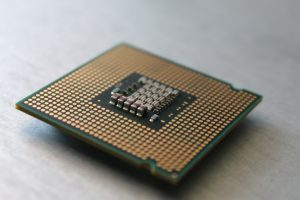During a time when computers, robotics, and automation are so advanced, it is vital that businesses have access to cutting-edge technology that can help them to thrive. Embedded systems are becoming increasingly common, especially in industrial settings where computers must be able to withstand rugged work environments, be reliable, and be up to safety standards. Embedded systems are also used in many consumer products, including smartphones, smart TVs, and laptops. Devices like this require a balance of performance and efficiency, which is why Intel’s hybrid architecture CPUs are common. Keep reading to learn more about embedded systems and Intel’s hybrid architecture CPUs.
What Are Embedded Systems?
First, it is helpful to define embedded systems. Embedded systems are computing systems integrated into a device or piece of equipment designed to perform a specific function or task. You will find embedded systems in many industries, which will become more common as tech continues to play such a major role in business and life.
Getting Cutting-Edge Solutions
Of course, every business is different when it comes to its tech requirements. This is why it is important to find embedded industrial computing experts that can listen to your needs and create tailored solutions. Experts like things-embedded.com have talented engineers who can use embedded systems using Intels hybrid architecture CPUs to solve your problems no matter your work environment. When you are able to get the best-embedded solutions designed specifically for your business, you can improve performance and efficiency. You can also rest assured knowing that your solutions will be up to the task whether you work in oil and gas, military and aerospace, power and energy, or any other industrial setting.
What Is Hybrid Architecture?
So, what is hybrid architecture? Essentially, this combines power-efficient and high-performance cores into a single processor, which helps strike the right balance between power and efficiency. The high-performance core can be used to manage intensive tasks that require a lot of power, while the efficient core can handle less rigorous applications, such as background processes. By combining these into a single processor, battery life and performance can be optimized – this makes hybrid architecture ideal for consumer products like smartphones, tablets, and laptops, but also in equipment found in industrial settings.
Intel’s Hybrid Architecture
Intel has been pioneering when it comes to processors, and this includes the introduction of their hybrid architecture CPUs. Originally codenamed Alder Lake, Intel’s 12th generation of processors utilize a hybrid architecture that is well-suited to embedded systems and products. It is vital that you have solutions that can blend both performance and efficiency. You’ll find that Intel’s hybrid architecture CPUs strike the right balance of being able to help businesses to improve performance but also efficiency in the workplace, so it could be the right choice for you.
Businesses must have the latest tech in their operation, especially in industrial settings. Embedded systems are becoming increasingly common in industrial settings. The key is to get embedded systems tailored to your specific application and industry so that you can optimize performance.








